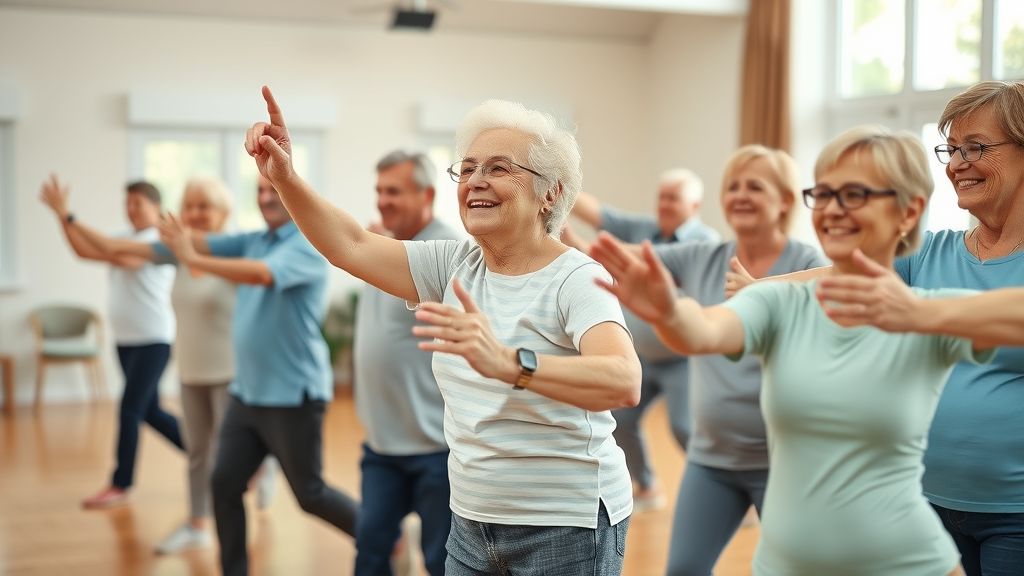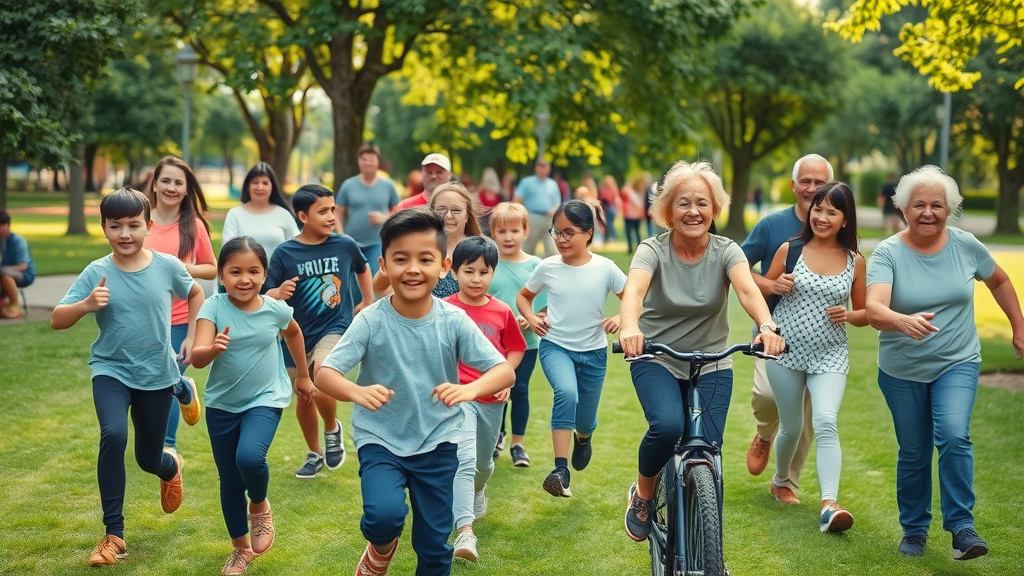Did you know: People who follow healthy aging habits can add up to ten years to their lifespan compared to those who don’t? Health by age isn’t just a slogan; it’s a roadmap for preventing health problems, boosting your quality of life, and feeling your best—no matter your stage of life. If you’ve ever wondered how to tailor your wellness routine to live longer and healthier, this guide offers practical, decade-by-decade tips to help you make every year count!
Understanding Health By Age: Why Each Decade Matters for Healthy Aging
The way we care for our bodies and minds changes with each new stage of life. Health by age means understanding what matters most at your current milestone, and why certain habits or screenings are vital for healthy aging. Every decade brings new strengths but also unique risk factors. Proactive steps in your 20s, like setting strong physical activity routines or focusing on healthy eating patterns, can delay or prevent health problems later on. As people age, issues like high blood pressure, muscle mass loss, and increased risk factors for heart disease often appear, but many are manageable—or even reversible—through targeted health care strategies.
No matter how old you are, you can improve your quality of life by addressing health conditions head-on and adopting new habits designed for your decade. This approach isn’t about fearing aging—it’s about embracing each year with knowledge and action. From regular doctor visits in your 50s to staying mentally and socially engaged in your 60s+, every stage of life offers opportunities to optimize your well-being.

- Health by age is more than just a buzzword—discover how the right steps at every stage can dramatically increase life expectancy.
- Find out what preventive care and healthy habits matter most for every major age milestone.
- Learn about the impact of key risk factors, from mental health to physical activity, on long-term healthy aging.
Key Takeaways: What You’ll Learn About Health By Age
- Lifespan-specific health problems and prevention
- The role of mental health and healthy eating for different ages
- How to address risk factors at any stage
- Actionable strategies to overcome chronic health conditions
- The importance of regular doctor visits for older adults and young individuals alike
| Decade | Common Health Problems | Preventive Tips |
|---|---|---|
| 20s | Minor injuries, stress | Exercise, develop sleep hygiene |
| 30s | Weight gain, stress, mental health | Healthy eating, regular checkups |
| 40s | High cholesterol, blood pressure | Regular activity, monitor health conditions |
| 50s | Increased chronic disease risk | Doctor regularly, focus on risk factors |
| 60s+ | Osteoporosis, heart disease | Preventive screenings, social engagement |
Laying the Foundation: Healthy Habits for Health By Age in Early Adulthood
Your 20s and 30s form the bedrock for the rest of your life’s health. Early adulthood is prime time to establish an exercise routine and eat in ways that lower future risk factors. At this stage, health by age means thinking beyond good looks to good health : lower risk for chronic disease, steadier mental health, and greater resilience as you age. Developing positive relationships with your health care provider and making annual checkups a habit can catch potential health problems before they have a chance to escalate. These simple steps create a lifelong safety net for your well-being.
The benefits of starting healthy habits early are not just physical. Evidence shows that young adults who learn to manage stress, get adequate sleep, and maintain strong mental health face fewer health conditions in the future. Building genuine connections and social support, investing in hobbies, and being proactive with doctor visits set you up for a higher quality of life even into your older adult years. Early adulthood is a stage of life where small positive changes generate big long-term rewards.
Physical Activity and Healthy Eating in Your 20s and 30s
Establishing regular physical activity habits—like daily walks, team sports, or strength training—is crucial for both physical and mental health. Moving your body now supports muscle mass and protects against future issues like high blood pressure and heart disease. Combine this with healthy eating by focusing on balanced meals, whole grains, lean proteins, and plenty of fruits and vegetables. Developing these habits becomes your best defense against the most common health problems down the line.
During your 20s and 30s, addressing the first signs of stress or mental health challenges is as important as eating well and staying active. This is also a great time to connect with your doctor regularly and discuss any family history of chronic disease, genetic risk factors or specific health concerns unique to your background. Think of these decades as the launchpad for the resilient, healthy aging you’ll experience in the years ahead.
It's also important to recognize how certain lifestyle choices in your 30s can have a lasting impact on your health trajectory. For a deeper look at the specific risks associated with poor habits during this pivotal decade, explore the key findings on how bad habits in your 30s can affect your long-term wellbeing .

- Establishing sustainable routines for physical activity
- Why healthy eating sets future risk factors
- Managing early mental health challenges
- Importance of building relationships with your doctor regularly
"Your 20s and 30s are the perfect time to future-proof your health by establishing rituals that stand the test of time." — Dr. Alicia Morgan, Preventive Medicine Specialist
Navigating Midlife: Tackling Health Problems and Maintaining Healthy Aging in Your 40s and 50s
As life reaches its most demanding years, so too do new health problems tend to appear. For many, the 40s and 50s bring concerns such as high cholesterol, high blood pressure, high blood sugar, and increased risk for chronic disease. The key to healthy aging here is catching these health conditions early, with regular health screenings and honest conversations with your doctor.
Recognizing risk factors before they escalate—such as a family history of heart disease or lifestyle-related stress—is the best way to maintain good health . This is an ideal time to re-evaluate your eating patterns and ramp up physical activity , aiming for at least 150 minutes per week of moderate exercise. Social connections are also crucial: social isolation and mental health issues are growing concerns among older adults in this age bracket, directly impacting quality of life and even accelerating cognitive decline.
Identifying Health Conditions and Risk Factors Before They Escalate
Being vigilant about health screenings in your 40s and 50s is critical. These years are when many chronic health problems—such as hypertension, type 2 diabetes, or high cholesterol—may silently begin to develop. Regular check-ups not only catch medical conditions early, but provide opportunities to discuss ongoing lifestyle improvements with your doctor. Keep in mind that both mental health and social engagement have been directly linked to preventing cognitive decline as people age, which makes regular assessment and active steps particularly important for older adults.
In midlife, it’s essential to identify personal risk factors—like smoking, lack of activity, poor diet, or unmanaged stress—that could hinder healthy aging. A strong partnership with your health care provider, combined with active participation in social and community life, leads to a more resilient, energized outlook in the years to come. Don’t ignore persistent symptoms or changes in your mood, and always talk to your doctor about new health concerns or symptoms that don’t resolve.

- Common health problems in midlife (cholesterol, hypertension, diabetes)
- Regular screenings and managing health conditions before chronic disease develops
- The growing role of mental health and the benefits of social connections for older adults
Mastering the Later Years: Health By Age Strategies for Older Adults and Healthy Aging
For ages 60 and beyond, health by age becomes a strategy for maximizing mobility, independence, and happiness while preventing or effectively managing chronic conditions. Visiting your doctor regularly takes on even more importance for older adults; early detection of issues like osteoporosis, heart disease, or cognitive changes means earlier intervention and a positive impact on quality of life.
Adjusting physical activity routines to match current abilities—think group fitness, walking clubs, or gentle yoga—supports both mental health and muscle mass while lowering the risk for falls and long-term disability. Social support networks provide critical protection against depression, isolation, and cognitive decline. Participating in community events, volunteering, or even gardening with friends help fulfill emotional needs while strengthening your immune system and overall health.
Preventing Major Health Problems: Doctor Regularly and Active Living
Seeing your doctor regularly in your later years is one of the best ways to prevent late-stage health problems that can often be more difficult to manage if not caught early. Annual screenings for bone density, cancers, vision and hearing health, and cognitive function are important for maintaining good health and quality of life into your older adult years.
Staying active doesn’t have to stop because of age. Older adults should look for enjoyable activities that match their mobility and preferences, such as water aerobics, tai chi, or group stretching. These forms of physical activity enhance balance, flexibility, and cardiovascular health while brightening mental health and promoting better sleep.
Perhaps most important is the role of community and emotional wellness. Building support networks among friends, family, or support groups offers encouragement and accountability for maintaining a healthy lifestyle and addressing emerging risk factors unique to older adults.

- Why visiting your doctor regularly prevents late-stage health problems
- Physical activity modifications for older adults to support mobility and mental health
- Building a support network: addressing seniors’ emotional and social needs
"Healthy aging isn't about avoiding aging—it’s about optimizing your quality of life at every age." — National Council on Aging
People Also Ask: Health By Age Questions Answered
At what age does your health peak?
- Research suggests most people reach peak physical health in their late 20s to early 30s. However, with healthy aging habits, mental health and wellbeing can continue to improve through midlife and beyond.
What age do people get sick the most?
- Risk for health problems increases notably after age 50, with chronic conditions becoming more common as we age. Preventive care and early detection are essential to manage health by age and reduce the frequency or severity of illness.
What happens to your body after 60?

- Older adults may experience natural declines in muscle mass, bone density, and immune response. Maintaining healthy aging routines, engaging regularly with your doctor, and staying physically active help mitigate many of these common health conditions.
At what age does the body start to decline?
- Most decline in physical health by age begins in the mid-30s to 40s, though the rate depends on genetics, lifestyle, and risk factors. With proactive care, many age-related health problems can be slowed or prevented.
Fact Check: Health By Age—Debunking Myths and Addressing Mental Health Connections
One of the most common myths is that health problems are inevitable as people age and there’s nothing that can be done to change that trajectory. In truth, quality of life is heavily influenced by factors within our control—like healthy eating, physical activity, and seeing a doctor regularly at every stage of life. Mental health plays a critical role alongside physical well-being. In both youth and older adult years, mental wellness determines energy, motivation, and risk for cognitive decline.
Health by age is not just for older people; it is a concept that matters at every age. Recognizing this connection helps debunk common misinformation and reaffirms the importance of proactive care—whether 22 or 72. Talk to your doctor about any medical or mental health concerns, and remember that good health habits are powerful at every stage of life.

- Common myths about health problems at different ages
- Why mental health matters at every life stage
- Recognizing that physical activity, healthy eating, and doctor regularly are essential from youth through older adults
Simple Guides: Practical Tips to Boost Health By Age at Every Stage
- Schedule annual health screenings relevant to your age
- Prioritize healthy eating and hydration, tailored per decade
- Protect mental health with mindfulness and social engagement
- Begin and maintain regular physical activity
- Consult your doctor regularly about personalized risk factors and health conditions
FAQ: Health By Age—Expert Answers to Common Health Problems
- Can lifestyle changes really delay aging health problems? Absolutely! Research proves that starting or sustaining healthy habits—such as regular physical activity, healthy eating, and stress reduction—can delay or even prevent many common health issues associated with aging. It's never too late to improve your quality of life.
- What screenings should I have at each decade? Screenings vary by age. In your 20s and 30s, annual physicals and mental health check-ins are key. In your 40s and 50s, screen for high blood pressure, cholesterol, and diabetes. After 60, add bone density, cancer screenings, vision, hearing, and cognitive tests.
- How can physical activity reduce risk factors unique to my age? Physical activity builds muscle mass, supports brain health, lowers blood pressure, and helps manage chronic health conditions. Starting young means better prevention; staying active later helps manage current health problems and maintain independence.
- What role does healthy eating play across the lifespan? Nutrition is central at every age. Whole foods, plenty of vegetables, healthy fats, and lean proteins help prevent disease and maintain a strong immune system and mental health. Your eating pattern should adjust to calorie and nutrient needs as you age.
- When should I talk to my doctor about new symptoms? Always notify your doctor about symptoms that persist or worsen—such as pain, fatigue, sudden weight change, or mood swings. Early communication allows for prompt diagnosis and better management of health conditions.
Moving Forward with Health By Age: Turning Information into Lifelong Healthy Aging
- Review the most actionable strategies from each life stage
- Set one practical goal for your next age milestone
- Remember: There’s always time to start healthy aging habits
Ready for Action? Boost Your Health By Age and Join the Wellness Seekers!
- Climb Aboard the Wellness Train! Ready to take control of your health—one smart step at a time? Explore more tips, tools, and real-life strategies to help you live better with chronic conditions. 👉 Join the Wellness Seekers today for exclusive guides, expert insights, and everyday solutions! Hop On the Train Now!
If you’re inspired to take your healthy aging journey even further, consider exploring the broader impact of lifestyle choices and risk factors as you move through each decade. Understanding how your daily habits shape your future health can empower you to make smarter decisions and avoid preventable setbacks. For a comprehensive perspective on the consequences of poor habits and how to build resilience at any age, don’t miss our in-depth guide on the health risks of bad habits in your 30s . Let this knowledge be your springboard to a more vibrant, proactive approach to lifelong wellbeing.
Take one proactive step today—no matter your age—toward lifelong healthy aging . Your path to better health starts now.
 Add Row
Add Row  Add
Add 




Write A Comment